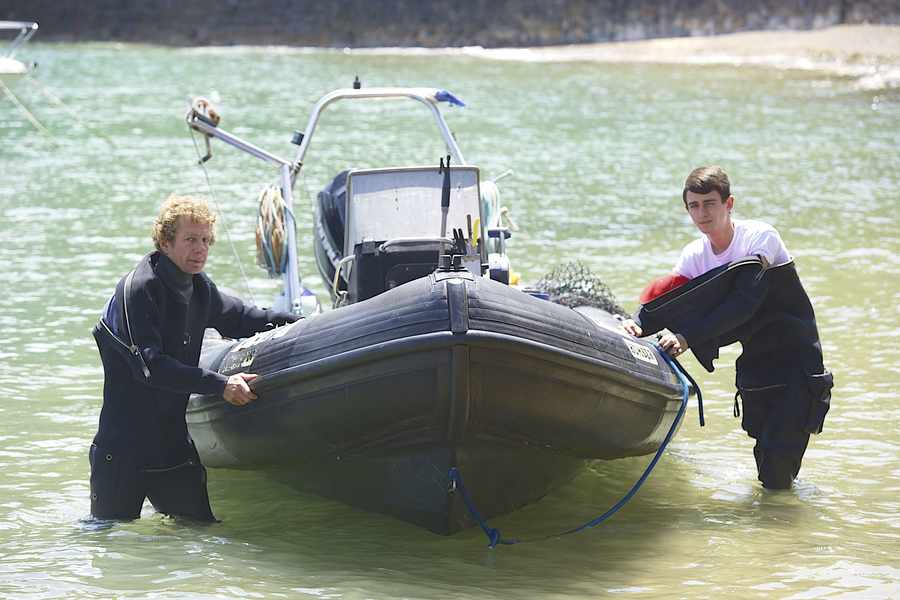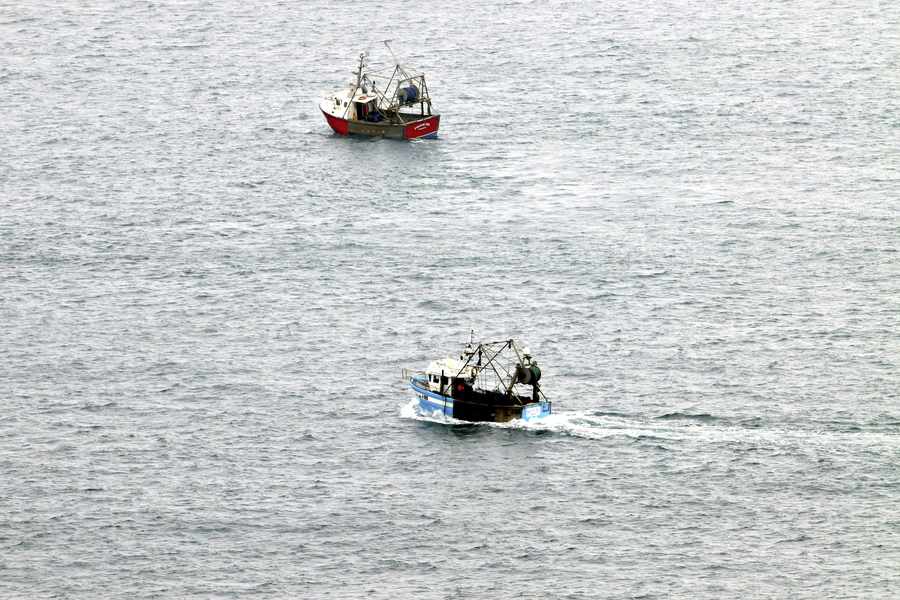Scallop diver Bob Titterington, who has repeatedly raised concerns in the past, says that underwater breeding habitats are still being torn up by fishing vessels, which drag equipment along the sea bed in order to snare bottom-dwelling species.
- Scallops swim by quickly opening and closing their shells to propel themselves through the water
- They have up to 100 eyes that help them detect light and movement
- Scallops feed by filtering tiny organisms from sea water
- The meaty, fleshy part of the scallop enjoyed by many diners is the creatures adductor muscle that is used to clamp the scallops shell closed
- The scallop shell has come to be a general symbol of pilgrimage and can be seen on Winston Churchills familys coat of arms
However, his claims have been countered by Don Thompson, the president of the Jersey Fishermen’s Association, who says that agreements about fishing limits are well established and that fishing businesses have an interest in maintaining a healthy sea bed.
According to Mr Titterington maerl beds – swathes of rocky seaweed that are home to different species – are being smashed by dredging equipment.
‘We’ve probably got the least stringent dredging regulations in the world,’ he said.
‘I’ve got footage of a maerl bed where you can quite clearly see track marks of a dredger.
‘Every single boulder appears to have been rolled over.
‘And if you think that low-water fishermen are told to turn boulders back once they’ve finished, it makes a mockery of the system to see an entire reef turned upside down.
‘Maerl grows at something like one millimetre per year.
‘What’s terrible is that a lot of maerl used by fish as a breeding ground is dead, so if you smash it up you won’t recover it at all because it won’t regrow.’

Similar concerns have been raised in the past by Jersey Sea Search, a volunteer-run organisation that is carrying out a five-year survey of the Island’s underwater landscape.
Under regulations introduced around five years ago dredging cannot be conducted within a depth of 20 metres around parts of the Island’s north, east and south coasts.
Mr Thompson said that these measures were suitable for the Island’s fishing industry and that new exclusion zones could be introduced around the Minquiers and Ecréhous if such a move is recommended following a report by the Société Jersiaise.
- Dredging for fish can be carried out in a number of different ways, but involves collecting bottom-dwelling species from the seabed.
- Some boats operate by dragging a metal device a fishing dredge along the seabed as they move across the water.
- After a period the equipment is then winched up into the boat and the contents collected.
- Other dredgers use a suction method to gather material from the seabed.
- Careless dredging has been blamed for destroying underwater habitats that are crucial for life beneath the waves.
He added: ‘What you have to remember is that many of the complaints from the diving fraternity are from those who dive for scallops for a living.
‘Bays around the Island are closed to dredging, as is quite a large area to the south and east where there are beds of maerl.
‘The last thing fishermen want is to see the sea bed damaged.
‘Commercially what dredgers are against is the drawing of arbitrary lines on sea charts saying: “We think this is a good area to protect”, which often preserves nothing, but can destroy fishermen’s livelihoods.’
Jonathan Shrives, the Environment Department’s marine and coastal manager, said that they had investigated a complaint about a dredger operating in a restricted area recently.
He said: ‘We boarded the boat, but found that it was outside of the closed area by about 300 metres.
‘Our view is that we like to work with fishermen to exclude dredging in sensitive areas.’






